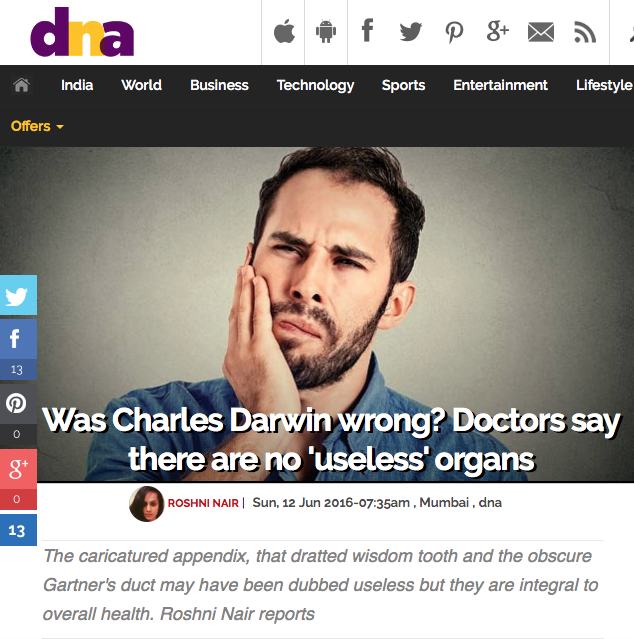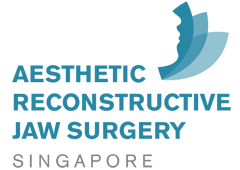Share this
Is it normal to do prophylactic wisdom teeth surgery in Singapore?
on June 15, 2016
I came across this article about vestigial body parts today and it struck a chord with me. I just reviewed an old patient who has been working deep in the Kalimantan forest for the past year. Before he left, we checked his oral condition thoroughly and did everything that needed to be done before he embarked on his new job in the jungle. Once inside, access to medical care is an 8-hour road trip. While his oral condition was fine the past year, he told me that he had a perforated appendix which needed emergency care. He endured the road trip and made it to hospital in time but it was a most harrowing experience. The wisdom tooth, like the appendix, is also a vestigial organ and is fully capable of causing an emergency that needed evacuation.
The question of whether an impacted wisdom tooth should be removed before it causes trouble has been debated ad nauseum. There are many arguments for and against prophylactic removal of asymptomatic wisdom teeth and they all do make sense.
Arguments for prophylactic removal
Wisdom tooth surgery in a young patient is relatively simple compared to that in an older patient. The bone is softer, making it easier to elevate the tooth out of the socket. Post-operative recovery is quicker and less eventful. Impacted wisdom teeth that become problematic late in life are usually more difficult due to potential medical problems such as hypertension and diabetes that may arise later in life.
Potential injury to the nerve in the jaw bone leading to numbness of the lips is one of the potential complications of wisdom tooth surgery. In the younger patient, the roots may be incompletely formed and are located further from the nerve. The risk of injury to the nerve is thus lower in such cases.
Impacted wisdom teeth are typically stuck below the crown of the adjacent second molars. In that position, oral hygiene is difficult to maintain, leading to food trap and plaque accumulation. This can give rise to both tooth decay as well as gum disease which may affect the functional second molar. Waiting till symptoms appear before removing the wisdom tooth may result in irreversible damage to the adjacent tooth, necessitating extraction or root canal treatment.
Impacted wisdom teeth often gets in the way of orthodontic treatment, preventing the proper movement of the adjacent teeth. In some cases impacted wisdom teeth has be implicated in causing crowding of the teeth after orthodontic treatment. Although it has not be scientifically proven that relapse of crowding is caused by impacted wisdom teeth, prophylactic removal eliminates one of the potential causative factors.
Arguments against prophylactic removal
Our body has many vestigial organs as the above article alluded to. No other vestigial body part is routinely removed. The appendix is a common comparison. Acute appendicitis can be potentially life-threatening but yet, nobody does prophylactic removal of the appendix.
Although wisdom tooth surgery is relatively simple, it is still an invasive procedure with the potential risk of injury to the jaw nerve, resulting in numbness of the lip or tongue. Although for most cases, the numbness is temporary, a few rare ones may be permanent.
Not all impacted wisdom teeth become problematic. There are people who have impacted wisdom teeth their whole life and have no problem at all. For those who do develop problems later in life, surgery can still be done then, albeit with a longer recovery and higher risk of complication.
When confronted with the choice, patients have to make the decision and for the younger patients, their parents. Wisdom teeth surgery in Singapore is becoming more and more routinely done, along with the rise in kids undergoing orthodontic treament. There are pros and cons of each and it is not a case of right or wrong decision. The final decision is driven by the patients’ and their parents’ outlook. Some people like to deal with problems as and when they arise, others like to take preventive measures. So long as the risks and benefits of each option are understood, either option is fine.
Share this
- Jaw Surgery (93)
- Dental Implants Singapore (90)
- Orthognathic Surgery (48)
- Replacing Missing Teeth (26)
- Missing Teeth Options (23)
- Underbite (23)
- Bone Grafting (21)
- Costs (18)
- Facial Aesthetics (18)
- Aesthetics (17)
- dental implants (16)
- corrective jaw surgery (15)
- BOTOX (11)
- Dermal Fillers (11)
- Wisdom teeth (10)
- Fixed Implant Dentures (8)
- Loose Dentures Singapore (6)
- Medisave (6)
- sleep apnea (6)
- Braces (5)
- Dental Pain (5)
- Dentures in Singapore (5)
- Loose Teeth (5)
- Tooth Extraction (5)
- jaw deformities (5)
- bimax (4)
- bone graft (4)
- maxillomandibular advancement (4)
- all-on-4 (3)
- bimaxillary protrusion (3)
- chin implant (3)
- facial asymmetry (3)
- full mouth dental implants (3)
- genioplasty (3)
- immediate implant (3)
- removal of an integrated dental implant (3)
- third molars (3)
- wisdom tooth surgery (3)
- My Dentures Don't Fit (2)
- VME (2)
- bone graft healing (2)
- distraction osteogenesis (2)
- medical tourism (2)
- obstructive sleep apnea (2)
- orthodontics (2)
- plastic surgery (2)
- CT guided dental implants (1)
- Double jaw surgery (1)
- Invisalign (1)
- Periodontal Disease (1)
- Permanent Dentures Singapore (1)
- before and after photos (1)
- facial trauma (1)
- fractured dental implant (1)
- oral appliance therapy (1)
- root canal treatment (1)
- veneers (1)
- vertical maxillary excess (1)
- September 2019 (2)
- July 2019 (2)
- May 2019 (2)
- August 2018 (1)
- October 2017 (1)
- September 2017 (2)
- August 2017 (1)
- June 2017 (2)
- May 2017 (4)
- April 2017 (1)
- March 2017 (1)
- February 2017 (3)
- January 2017 (3)
- December 2016 (1)
- November 2016 (2)
- October 2016 (4)
- September 2016 (9)
- August 2016 (5)
- July 2016 (11)
- June 2016 (14)
- May 2016 (6)
- April 2016 (2)
- March 2016 (1)
- January 2016 (7)
- December 2015 (10)
- November 2015 (4)
- October 2015 (9)
- September 2015 (7)
- August 2015 (1)
- July 2015 (6)
- June 2015 (3)
- May 2015 (7)
- April 2015 (5)
- March 2015 (8)
- January 2015 (5)
- December 2014 (7)
- November 2014 (7)
- October 2014 (6)
- September 2014 (8)
- August 2014 (5)
- July 2014 (7)
- June 2014 (8)
- May 2014 (9)
- April 2014 (10)
- March 2014 (6)
- February 2014 (8)
- January 2014 (3)
Subscribe by email
Email subscription





No Comments Yet
Let us know what you think